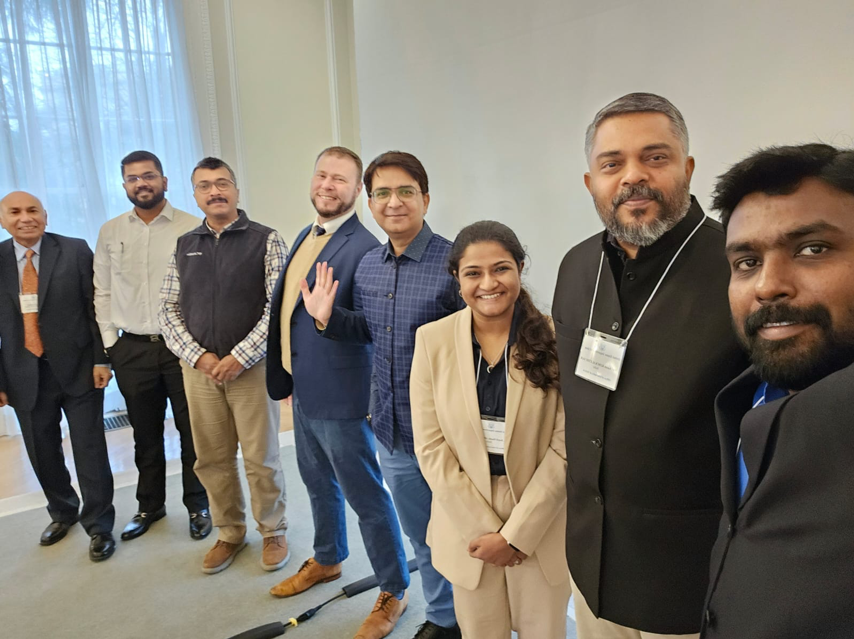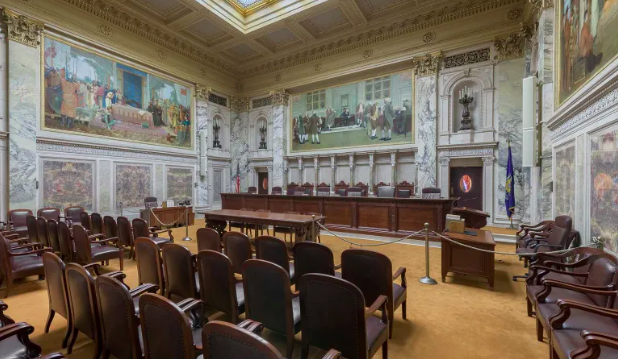The first issue of the newly formed International Journal of Religion features an article by Ahmet Kuru, Professor of Political Science at San Diego State University and a scholar with the Religious Freedom Institute’s (RFI) Freedom of Religious Institutions in Society (FORIS) Project.
In his article, “Islam, Catholicism, and Religion-State Separation: An Essential or Historical Difference?” Kuru draws upon the history of the relationship between Muslim religious scholars (ulema) and political rulers in the Muslim-majority world. He aims to demonstrate that religion-state separation is not without precedent in Islam.
Kuru recognizes that many Muslim-majority countries do not uphold religious freedom today. He attributes this state of affairs to the tendency of Muslim societies and their leaders to unite religion and state. However, this arrangement was not always the case. For example, Muslim scholars avoided close alignment with governing authorities for centuries until the eleventh century. He explains:
Between the eighth and mid-eleventh centuries, Islamic scholars generally regarded close entanglements with political authorities as corrupt. The ulema preferred to be funded by the private sector, especially commerce. Only a small minority of them worked as state servants. (92)
The ulema during this time avoided government funding and instead relied on the profits of commerce along with industry. As such, “the ulema ‘were a vaguely defined body of men’ who had little internal structure” and held multiple identities and occupations.” (94) Consequently, many different varieties of Islam emerged in this period. A religion-state alignment of Islam would not have permitted this multiplicity of theological positions and broached disagreement on fundamental theological principles.
This relative independence between Muslim scholars and political authorities did not endure. With economic decline undermining the ulema’s commercial support and the emergence of military regimes, the ulema and rulers during the Abbasid dynasty (750-1258) became more closely allied. Kuru writes:
[T]he ulema-state alliance used religious orthodoxy and state violence to suppress contenders. Threatened by execution in this world and eternal hellfire in the hereafter, many Muslims were discouraged from intellectual exploration outside the boundaries drawn between the religious and political authorities. (97)
Meanwhile in the Christian world of medieval Europe, popes and kings attempted to seize each other’s powers. For instance, both laid claim to the power of appointing bishops. Popes claimed the power to excommunicate emperors and kings, thereby undermining Christians’ obligations to obey such leaders. Kings meanwhile asserted the authority to depose the Pope and instate one of their own liking. The subsequent conflict between them culminated over time in their pursuit of their own respective spheres of authority, ecclesiastical and political. (99)
Drawing from the famous nineteenth century English statesman, Lord Acton, Kuru views these conflicts between church and state as enabling “the rise of civil liberty in Western Europe.” (99) Islam since the eleventh century witnessed an opposite trend, one moving towards the uniting of religion and state in an integrated theological-political entity.
Kuru, however, points to possible grounds for optimism. He concludes:
This article does not promote a pessimistic understanding about the future of religious freedom in Muslim-majority countries. In fact, it argues that Islam is not an inherently monistic religion and shows that early Islamic history included examples of a certain religion-state separation. Therefore, it, in fact, promotes optimism. If Muslims decide to separate their religious and governmental institutions, they do not have to search for models exclusively in the West. They can find inspirational examples in their own history. (101)
Additional Resources:
-
“Islam and Institutional Religious Freedom” (Sept. 27, 2020) by Ahmet Kuru
-
The Politics of Religion and the launch of International Journal of Religion: Prof Ahmet Kuru Dec. 13, 2020 (video panel discussion)
THE RFI BLOG

Be More Faithful, Become More Resilient: An Invitation to Religious Institutions

How Soccer Reveals Different Meanings Of ‘Secular’ In France And The US

RFI’s Ismail Royer Meets with Delegation from India

Protecting the Unborn, Mothers, and Medical Ethics: The Stakes of Arkansas’ Amendment

Wisconsin Supreme Court Punishes Catholic Charities for Serving Everyone
CORNERSTONE FORUM

Public Bioethics & the Failure of Expressive Individualism

Religious Liberty in American Higher Education

Scotland’s Kate Forbes and the March of Secularism

70 Years of Religious Freedom in Sweden: Prospects and Challenges

